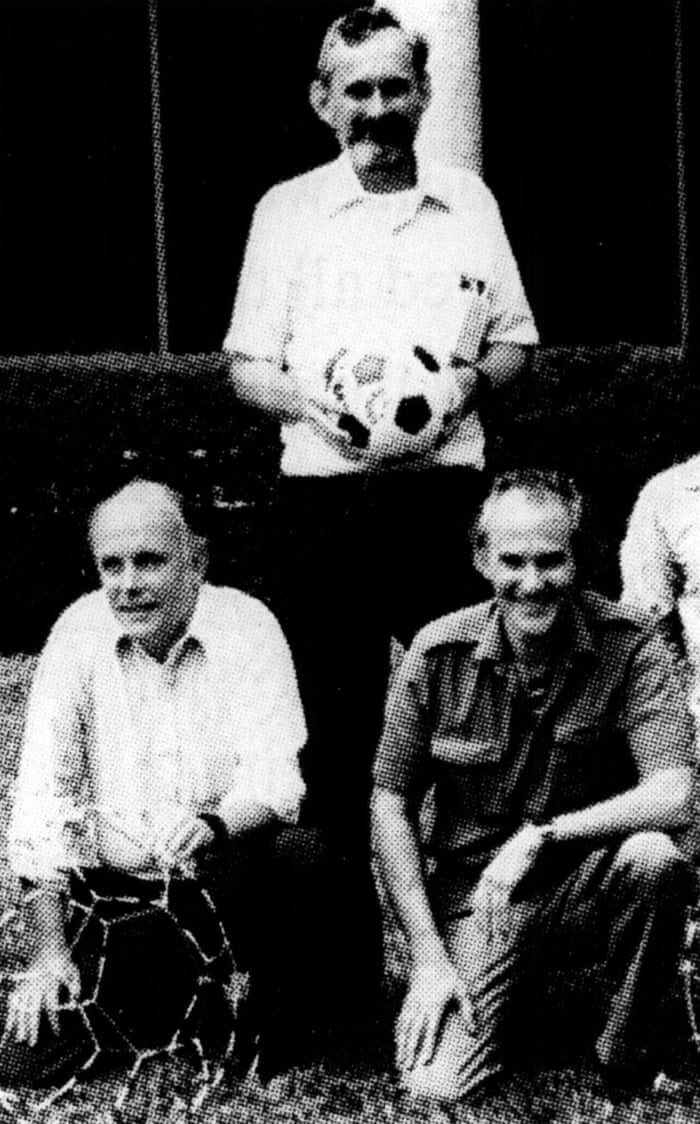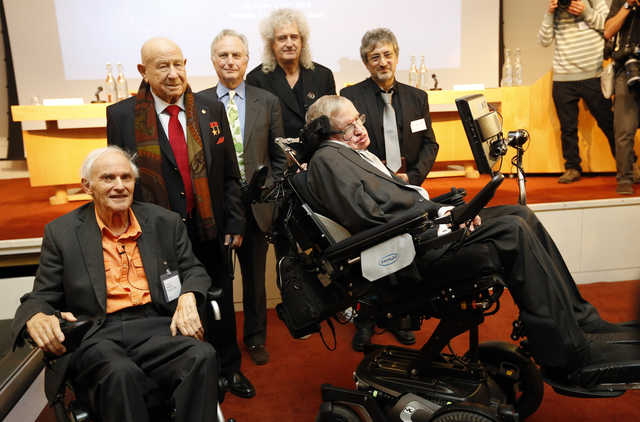Why was Tony Curtis on the cover of SGT PEPPERS? I have no idea but if I had to hazard a guess I would say that probably it was because he was in the smash hit SOME LIKE IT HOT.


Above from the movie SOME LIKE IT HOT
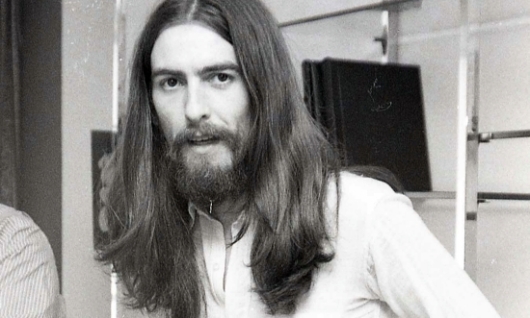
__

__

But he knew it couldn’t last
Jojo left his home in Tucson, Arizona
For some California grass
Get back to where you once belonged
Get back, get back
Get back to where you once belonged
Get back Jojo (Uh uh uh uh yeah) (Go home)([Oh!)
Back to where you once belonged
Get back, get back
Back to where you once belonged
Oh, get back Jo
Yeah, get back Jo! Yeah, oh oh oh
But she was another man
All the girls around her say she’s got it coming
But she gets it while she can
Get back to where you once belonged
Get back, get back
Get back to where you once belonged
Get back

Another Sgt. Pepper’s face passes away
[Posted by Dave Haber on Thursday, 09/30/10 2:06 pm] [Full Blog] [Tweet] [Facebook]
Actor and Hollywood legend Tony Curtis has passed away. He was among the actors and famous people that the Beatles admired that were pictured on the cover of the Sgt. Pepper’s Lonely Hearts Club Band album in 1967.
 |
Curtis, himself, was a big Beatles fan. In March, 2009, Tony Curtis visited Las Vegas to sign autographs for fans to celebrate the release of his book, “American Prince – A Memoir.” Curtis showed up to the event wearing a t-shirt bearing the picture of the Sgt. Pepper’s cover in which he appears.
 |
| Tony Curtis in 2009 |
Known for comedic roles like Some Like it Hot and serious movies like Spartacus, Curtis died on Wednesday of cardiac arrest in his Nevada home. He was 85.

___
Letter to Hugh Hefner close friend of Tony Curtis:
May 26, 2016
Dear Mr. Hefner,
I understand you were longtime friends with Tony Curtis and that he even took up a long-term residence at the Playboy Mansion at one time. Actually over his long life he suffered from alcoholism, drug addiction and what he called an “addiction to women.” Francis Schaeffer observed concerning King Solomon, “You can not know woman by knowing 1000 women.” Since it was your philosophy that produced these results in countless homes in modern times do you feel somewhat responsible to those children who have been disenfranchised by the broken homes?
In the article, “The worst father in the world? Tony Curtis neglected his children. Now they’re having to sue for a share of his £37million fortune” By ALISON BOSHOFF FOR THE DAILY MAIL,
To his millions of fans he was the last of the great matinee idols, the most handsome of all Hollywood stars and a man whose incredible sexual career encompassed a fling with Marilyn Monroe and a period of taking showgirls ‘two a day’ like vitamin pills.
But to his family, life with Tony Curtis — who had six children and six wives — was a more fraught affair. His actress daughter Jamie Lee Curtis has declared numerous times that he ‘wasn’t a father’ to her, and he admitted candidly that he had been a lousy dad…
Meanwhile Allegra, the black sheep among the children, who posed for PLAYBOY in her youth, has recently written a book describing her father as a drug-addicted ‘demon’, and bemoaning the fact that he never gave her a chance to be his daughter.
‘My father was a victim of his fame, and I am the victim of my father, the global star. I got to learn about the dark side of the spotlight,’ she said. ‘My life with him was always unstable.’
I grew up at Bellevue Baptist Church in Memphis, Tennessee and recently I got to listen to a CD with the sermon entitled WHY AM I HERE? by Steve Gaines the current pastor of Bellevue Baptist. This sermon really does describe those who like TONY CURTIS who are looking for life’s meaning in liquor, luxuries or lust. Here is an excerpt:
Today we are going to do a very quick overview of the Book of Ecclesiastes. If you want to describe Ecclesiastes then you could describe it with these words BEEN THERE DONE THAT, NOW WHAT?
Ecclesiastes was written by a frustrated old man who had wasted his life on this earth. Solomon wrote three books. He wrote THE SONG OF SOLOMON when he was a young man in love and he was in love with a precious wife and would to God that he would have stayed in that vein. Then as an older man he wrote Book of Proverbs and he showed that he was indeed a very wise man at the moment he wrote those words inspired by the Holy Spirit. But at the end of his life when he had turned his heart from the Lord and he had married all these women from many different religions and he had all these different concubines and he had tried everything in life then he sat down and wrote his opus call Ecclesiastes. It is a book of frustration written by a man who had wasted his life.
Let’s look first at why we are not here.
FIRST, we are not here primarily for scholarship or learning.
Ecclesiastes 1:12-13 New American Standard Bible (NASB)
12 I, the Preacher, have been king over Israel in Jerusalem. 13 And I set my [a]mind to seek and explore by wisdom concerning all that has been done under heaven. It is [b]a grievous task which God has given to the sons of men to be afflicted with. 14 I have seen all the works which have been done under the sun, and behold, all is [c]vanity and striving after wind.
SECONDLY, we are not here primarily for possessions and pleasure.
Ecclesiastes 2:3-11 New American Standard Bible (NASB)
3 I explored with my [c]mind how to stimulate my body with wine while my [d]mind was guiding me wisely, and how to take hold of folly, until I could see what good there is for the sons of men [e]to do under heaven the few [f]years of their lives. 4 I enlarged my works: I built houses for myself, I planted vineyards for myself; 5 I made gardens and parks for myself and I planted in them all kinds of fruit trees; 6 I made ponds of water for myself from which to irrigate a forest of growing trees. 7 I bought male and female slaves and I had [g]homeborn slaves. Also I possessed flocks and herds larger than all who preceded me in Jerusalem. 8 Also, I collected for myself silver and gold and the treasure of kings and provinces. I provided for myself male and female singers and the pleasures of men—many concubines.
9 Then I became great and increased more than all who preceded me in Jerusalem. My wisdom also stood by me. 10 All that my eyes desired I did not refuse them. I did not withhold my heart from any pleasure, for my heart was pleased because of all my labor and this was my reward for all my labor. 11 Thus I considered all my activities which my hands had done and the labor which I had [h]exerted, and behold all was [i]vanity and striving after wind and there was no profit under the sun.
(Verse 8 is put this way by THE MESSAGE, “I gathered a chorus of singers to entertain me with song, and—most exquisite of all pleasures— voluptuous maidens for my bed.”)
THIRDLY, we are not here primarily for work.
Ecclesiastes 2:22-23 New American Standard Bible (NASB)
22 For what does a man get in all his labor and in [d]his striving with which he labors under the sun?23 Because all his days his task is painful and grievous; even at night his[e]mind does not rest. This too is vanity.
FOURTHLY, we are not here primarily for money.
Ecclesiastes 5:10-12 New American Standard Bible (NASB)
10 He who loves money will not be satisfied with money, nor he who loves abundance with its income. This too is [a]vanity. 11 When good things increase, those who consume them increase. So what is the advantage to their owners except to [b]look on? 12 The sleep of the working man is pleasant, whether he eats little or much; but the [c]full stomach of the rich man does not allow him to sleep.
If we are not here primarily for scholarship, possessions, pleasures, work or money then what are we here for?
We are here primarily for God.
Ecclesiastes 12:1, 13-14 New American Standard Bible (NASB)
12 Remember also your Creator in the days of your youth, before the evil days come and the years draw near when you will say, “I have no delight in them”;
13 The conclusion, when all has been heard, is: fear God and keep His commandments, because this applies to every person. 14 For God will bring every act to judgment, everything which is hidden, whether it is good or evil.
You see Solomon is the one who wrote in Proverbs:
Proverbs 9:10 Amplified Bible (AMP)
10 The [reverent] fear of the Lord [that is, worshiping Him and regarding Him as truly awesome] is the beginning and the preeminent part of wisdom [its starting point and its essence],
And the knowledge of the Holy One is understanding and spiritual insight.
But then Solomon wasted his life. He didn’t fear and revere and serve the living God, and then he comes back full circle and says he was right when he first wrote Proverbs 9:10.
Jesus said we are here to focus on the king and his kingdom. “But seek first the kingdom of God and his righteousness, and all these things will be added to you.” (Matt 6:33). Jesus when he was praying to the Father said, “And this is eternal life, that they know you the only true God, and Jesus Christ whom you have sent,” (John 17:3).
My life is supposed to be about Jesus.
Matthew 22:35-38 English Standard Version (ESV)
35 And one of them, a lawyer, asked him a question to test him.36 “Teacher, which is the great commandment in the Law?” 37 And he said to him, “You shall love the Lord your God with all your heart and with all your soul and with all your mind. 38 This is the great and first commandment.
We are here everyday to enjoy God and to have fellowship with God. To get to know God, to worship God, to serve God and to prepare to meet our God and who we are going to stand before and give account of the life he has given us. That is why we are here. Not primarily for scholarship, possessions, money and career.
If any one person were to be singled out as the most influential promoter of hedonism in modern times, it would surely have to be Hugh Hefner. His Playboy magazine, first published in the mid-1950s has had an unusually large circulation – especially among college and university people – in the intellectual community. Playboy has also had the second largest circulation of all American magazines in all of Western Europe, preceded only by the Reader’s Digest.[6] Through Playboy‚ Hefner has produced a slackening of moral standards, an excessive freedom of profane expression, and a much less disciplined world.
The destructive nature of Hefner’s philosophy, endorsed and promoted by the networks, hasn’t escaped some of the secular press. Chicago Tribune‚ columnist Bob Greene makes some startling and intriguing personal assessments in an article on Hefner. Green credits him with being one of the two most influential Americans in the second half of the twentieth century.[8]
Green says, “Hugh Hefner let Americans know that they could behave in any way they pleased. Conventional ideas of morality didn’t matter; the standards of one’s parents didn’t matter; the approval of one’s peers didn’t matter. All that mattered was that feeling good became an end in itself.”[9] To say that Hugh Hefner is the originator of the immoral revolution we’ve witnessed in recent decades would be incorrect. However, to say that no one person in modern times has more effectively exploited immorality than has Hugh Hefner would not be inaccurate. He took advantage of the fact that, for most Americans, moral standards had already been emptied of their Godly authority.
When a personal sense of duty, responsibility and a sense of moral righteousness is no longer rooted in a belief that God holds all men accountable for their actions, then human behavior is often regulated by one’s own personal pleasures. In the name of freedom, Hefner championed pleasure. By calling for individual freedom, Hefner promoted individual selfishness and social irresponsibility that worked havoc on our cultural morality and especially on the institution of marriage.
This is the legacy of HUGH HEFNER, a modern day SOLOMON.Can you imagine what it will be like for HUGH HEFNER to stand before the judgment seat of God with a wasted life and having led so many boys and men into pornography and destroyed so many marriages all for hedonism. All living for pleasure are just like Solomon did way back when and I am telling you friend there is no (satisfaction you derive from ) it. What is real is knowing God.
Colossians 1:15-16 English Standard Version (ESV)
15 He is the image of the invisible God, the firstborn of all creation. 16 For by[a] him all things were created, in heaven and on earth, visible and invisible, whether thrones or dominions or rulers or authorities—all things were created through him and for him.
Money, possessions, hedonistic pleasures, clubbing around, pornography, food, alcohol, drugs, work, or career will NOT satisfy you . Your ultimate reason for being on this planet is to come to know God. He created this world as a paradise. With sin we messed it all up but he wouldn’t leave us un-reconciled. He kicked out ancestors out of the garden, but then he sent his own son back to this earth to redeem us and reconcile us, to die as an atoning sacrifice for our sins to bring us back to himself so everyday we could wake up and say good morning father. We can know our sins are forgiven. We can know in this broken world that we have been healed of our brokenness by the one who entered into our suffering, not a God who is distant from our suffering but a God who loved us enough to enter into our suffering to give eternal abundant life. That is what life is about, a relationship with God through the Lord Jesus Christ. Would you today give Him your life?
Steve and Donna Gaines pictured below

King Solomon

___________
Steve Gaines mentioned that Christ came and laid his life down to die for our sins. Let me share an Old Testament prophecy that indicates the Bible is true concerning Christ being executed on a cross. Some 400 years before crucifixion was invented, both Israel’s King David and the prophet Zechariah described the Messiah’s death in words that perfectly depict that mode of execution. Further, they said that the body would be pierced and that none of the bones would be broken, contrary to customary procedure in cases of crucifixion (Psalm 22 and 34:20; Zechariah 12:10). Again, historians and New Testament writers confirm the fulfillment: Jesus of Nazareth died on a Roman cross, and his extraordinarily quick death eliminated the need for the usual breaking of bones. A spear was thrust into his side to verify that he was, indeed, dead.

Psalm 22 New American Standard Bible (NASB)
For the choir director; upon [a]Aijeleth Hashshahar. A Psalm of David (Solomon’s father)
22 My God, my God, why have You forsaken me?
[b]Far from my deliverance are the words of my [c]groaning.
2 O my God, I cry by day, but You do not answer;
And by night, but [d]I have no rest.
6 But I am a worm and not a man,
A reproach of men and despised by the people.
7 All who see me [g]sneer at me;
They [h]separate with the lip, they wag the head, saying,
8 “[i]Commit yourself to the Lord; let Him deliver him;
Let Him rescue him, because He delights in him.”
12 Many bulls have surrounded me;
Strong bulls of Bashan have encircled me.
13 They open wide their mouth at me,
As a ravening and a roaring lion.
14 I am poured out like water,
And all my bones are out of joint;
My heart is like wax;
It is melted within [l]me.
15 My strength is dried up like a potsherd,
And my tongue cleaves to my jaws;
And You lay me [m]in the dust of death.
16 For dogs have surrounded me;
[n]A band of evildoers has encompassed me;
[o]They pierced my hands and my feet.
17 I can count all my bones.
They look, they stare at me;
18 They divide my garments among them,
And for my clothing they cast lots.
Thanks for your time.
Sincerely,
Everette Hatcher, everettehatcher@gmail.com, http://www.thedailyhatch.org, cell ph 501-920-5733, Box 23416, LittleRock, AR 72221
Tony Curtis, famous Hollywood film star is pictured in London, United Kingdom, on April 27, 1970, before appearing at Uxbridge Court, Middlesex, England where he pleaded guilty to having in his possession a quantity of cannabis resin, when he arrived at London Airport Heathrow at night. He was fined £50 (dollars 120).

___

_____

___

___

Here’s Judy with Tony Curtis who the reporter says “is impressed with her bounteous beauty”, lest we forget it’s all about the ta ta’s!!
___

38
View comments

Final tragedy: Some of Tony Curtis’ children are fighting his decision to disinherit them from his will
To his millions of fans he was the last of the great matinee idols, the most handsome of all Hollywood stars and a man whose incredible sexual career encompassed a fling with Marilyn Monroe and a period of taking showgirls ‘two a day’ like vitamin pills.
But to his family, life with Tony Curtis — who had six children and six wives — was a more fraught affair. His actress daughter Jamie Lee Curtis has declared numerous times that he ‘wasn’t a father’ to her, and he admitted candidly that he had been a lousy dad.
Now, six months after his death, this assessment comes into sharp focus as it emerges that Curtis, star of film classics such as Some Like It Hot and Spartacus, has not left any of his children a solitary cent of his fortune — estimated by some to be worth as much as $60 million (around £37 million).
In fact, the fallout over his will has been such that I can reveal that his eldest child, Kelly, has taken legal action to challenge it — although this has so far failed.
I am also told that a second daughter, Alexandra, is contemplating further legal action. She has hired a lawyer to look into questioning the last will and testament, which was written just five months before his death last September.
It looks likely that the two half-sisters will now join forces and appeal. What seems to be stirring up the family is that Tony Curtis always said that there would be money for his children and grandchildren — and indeed they believe there were several prior wills drawn up in their favour.
However, his latest document explicitly — and extraordinarily — cuts them out completely. It reads: ‘I acknowledge the existence of my children . . . and have intentionally and with full knowledge chosen not to provide for them in this last will and testament.’

Legal action: Curtis poses with his daughters Alexandria and Allegra during 2009. Alexandria is seeking advice over the distribution of the will while Allegra has claimed she is a victim of her father’s fame
Instead his sixth wife, a blowsy, 6ft former lingerie model named Jill Vandenberg gets the lot.
As you might expect, this is not popular with the children.
His will decrees that the fortune is left to a trust, which is to be administered by Jill as his ‘personal representative’. She has ‘absolute discretion’ over the money, specifically including all of his property portfolio — including homes in Hollywood, Nevada and Hawaii — which she can sell should she want to.
‘Everything the children should have, Jill has,’ says Christine Kaufmann, the German starlet who was Curtis’s second wife and mother of daughters Alexandra and Allegra.
‘I do believe that deep down inside he was a nice Jewish father, and you know that nice Jewish fathers do not disinherit their children,’ Christine told me last week. ‘Tony was on strong painkillers at the end, and they make you really stoned.’
She claims that Curtis loved his children deeply, as they did him, despite his failings as a father. She also says there had been no falling out that explains their omission from the will. Kaufman suspects that any money Vandenberg inherited is being spent on the horse sanctuary which she runs in Sandy Valley, Nevada.

Happier times: Tony Curtis and first wife Janet Leigh pose with their daughters Kelly and Jamie Lee
‘Jill has lots of three- legged horses that she has to take care of which are very expensive,’ she says.
Feelings among the family have now reached an all-time low. One of Curtis’s sons, Ben, 37, is said to feel so bitter that he even refused to attend his father’s funeral last October. Ben’s mother Leslie, Curtis’s third wife, says that he ‘loved his father very much’ but found it a ‘poignant and difficult time’ because of the death of his brother, Nicholas, who succumbed to a heroin overdose in 1994.
Meanwhile Allegra, the black sheep among the children, who posed for Playboy in her youth, has recently written a book describing her father as a drug-addicted ‘demon’, and bemoaning the fact that he never gave her a chance to be his daughter.

Curtis picks up his son Nicholas, who succumbed to a heroin overdose during 1994
‘My father was a victim of his fame, and I am the victim of my father, the global star. I got to learn about the dark side of the spotlight,’ she said. ‘My life with him was always unstable.’
So far the tome has only been published in Germany. But Allegra, Curtis’ fourth daughter, contacted me last week from Majorca where she lives to say that, despite the problems, she always continued to love her father.
Her feelings towards Jill Vandenberg, however, are ‘not the kindest’. Actress Jamie Lee Curtis, who gave a moving address when her father was laid to rest, has also recently spoken of Tony’s failings as a father — claiming there was ‘no bond’ at all between them.
But Jamie Lee, Curtis’s second daughter, by Janet Leigh, has reportedly decided that it would be futile to sue because she thinks her stepmother may have already frittered away the fortune.
Jamie Lee’s publicist Heidi Schaeffer simply said sternly last month: ‘No one should be speculating on Jamie’s reasons for not being involved in the lawsuit. There is no further comment.’

Wife number one: Janet Leigh, who Curtis married in 1951

Wife number two: Christine Kaufmann was mother of Alexandra and Allegra
And at the centre of the storm is Miss Vandenberg, who has just issued a brief statement saying: ‘Tony’s last will and testament and his passing wishes are family matters.’
It’s a complicated scenario because, whatever his family’s feelings towards Vandenberg and the inheritance they claim she has cheated them out of, Tony was certainly happy in his twilight years with his sixth wife.
The pair met in 1993 in a restaurant, and were married five years later when he was 73 — and she just 30.
Although he said in interviews that he never ‘got over’ the death of his son Nicholas, and could never speak of the pain, Jill undoubtedly helped him through that dark period of his life.
And in 2008, just two years before he died after a heart attack, Tony spoke of how deeply content he was with her. ‘I don’t want anyone in my life except my wife Jill,’ he said. ‘And for the first time in my life it isn’t just lust.’
Coming from a man who once admitted that he struggled with his ‘addiction to women’, that was quite an accolade.
Alcoholism and drug addiction were behind him by this point of his life. And after many years at the epicentre of the Hollywood social scene alongside characters including Marilyn Monroe, Frank Sinatra and Kirk Douglas, he had retired from acting and devoted himself full time to painting.

Wife number three: Leslie Allen bore Curtis two sons, one of whom died

Wife number four: Actress Andrea Savio was Curtis’ next wife

Wife number five: Lawyer Lisa Deutsch, who he married in 1993

Wife number six: Jill Vandenberg was married to Curtis until his death
It was left to Jill to nurse him through various illnesses. He came close to death after a bout of pneumonia in 2006, which left him in a wheelchair.
He also suffered from chronic obstructive pulmonary disease, and had increasing trouble breathing. In July 2010, he was taken ill with an asthma attack at a book signing event.
Christine Kaufman, however, remains steadfast in her suspicion of Jill. She calls her a ‘fridge made of marzipan’ — a curious phrase intended to indicate that she is sweet on the outside, but cool on the inside.
‘I’m not picking on Jill because I admire her for staying with Tony,’ Christine admits.
‘He was a complicated man but she was very happy with him, and he with her.
‘But Tony promised to take care of the children, and we all want to know what happened to that promise.’
___

Tony Curtis with Monroe below:

The Third Girl from the Left
Posted in Art Models/ Bathing Beauties/ Beauty Queens/ Burlesque Dancers/ Chorines/ Pin-Ups/ Sexpots/ Vamps, Burlesk, Television, Women with tagsburlesque, Chorus Girls, Cory Previn, Hugh Hefner, Kim Novak, New York City,Playboy, The Third Girl from the Left, Tony Curtis, tv movie on February 20, 2015 by travsd
Here’s one for all burlesque fans. We caught this 1973 tv movie the other day and must share news of its existence. Written by Dory Previn (whom we only just heard about and are rapidly becoming a fan of) and produced by Hugh Hefner, The Third Girl from the Left tells of a historical moment I’ve always been curious about; the moment when the burlesque art form “died” in New York. As I’ve written, the burlesque INDUSTRY died in the 1930s when Mayor LaGuardia cleaned up Times Square. But for a time (decades in fact) nightspots continued to feature floor shows with burlesque style chorus girls. In places like Las Vegas and Atlantic City of course that type of thing NEVER died. But about two thirds of the way though the 20th century, it died in New York, to be replaced with topless titty bars. Though The Third Girl from the Left was made in 1973, it appears to be set a few years earlier, circa 1967, and that sounds about right. (Clues: a cinema is showing You Only Live Twice and it simply feels more like the 60s than the 70s).
Adding to the poignance and the meta symbolism of the moment is the casting in the lead roles, Kim Novak and Tony Curtis. Both were major stars of the 1950s who seemed to be going to seed; this was the first tv movie for either of them. Novak, who was 40, plays an aging chorus girl (her character is 36), still gorgeous, fit and statuesque, who is nonetheless on the way down and out. For 13 years she has been the semi-kept woman of a successful entertainer played by Curtis. (They should have made him a comic a la Lenny Bruce. In the film he is a singer, he really sings, and he is a terrible singer.)
Curtis disses her royally. He’s always out of town, and when he is, he bangs whoever’s around. In the film, it’s none other than Barbi Benton (Hef’s squeeze at the time). As a kind of revenge, Novak hooks up with a much-younger hippie but hunky grocery delivery boy played by Novak’s real-life partner at the time Michael Brandon. They briefly hatch implausible plans of running away together, going back to school, and living a vastly different life. But it proves a fantasy, a bubble. Curtis comes back and there is an ugly confrontation. Brandon washes out and Curtis rather lamely finally makes a long overdue marriage proposal — too little, too late. The final moment, typical for the time, is the freeze frame on an uncertain future for Novak, not unlike the one at the end of Sweet Charity. Terrific telefilm and one of Novak’s best performances.
Jeffrey Gibson
| Jeffrey Gibson | |
|---|---|

Gibson speaking at the Eiteljorg Museum in 2009. His artwork Mythmaker is in the foreground and Second Nature in the background.
|
|
| Born | March 31, 1972 Colorado |
| Nationality | Choctaw–Cherokee |
| Education | BFA Art Institute of Chicago, MFA Royal College of Art |
| Known for | Painting, sculpture |
| Website | www.jeffreygibson.net |
Jeffrey A. Gibson (born March 31, 1972)[1] is a Choctaw–Cherokee painter and sculptor.
Background[edit]
Early life[edit]
Born in Colorado, as a child his family moved frequently. As a youth he lived in Germany and Korea. Important to his role as an artist, press releases state that “This unique combination of cultural perspectives and exposure are essential to understanding Gibson’s artworks that combine and transform seemingly disparate references drawn from both Western and non-Western sources.”[2]
Higher education[edit]
In 1995 Gibson earned his Bachelor of Fine Arts from the Art Institute of Chicago. In 1998 he received his Master of Fine Arts from the Royal College of Art, which was paid for by the Mississippi Band of Choctaw Indians. Gibson remarked on this opportunity provided for him: “My community has supported me…My chief felt that me going there, being a strong artist, made him stronger.”[3][4]
Current life[edit]
He is currently an Artist in Residence at Bard College and teaches in Studio Art. In 2010 he was a visiting artist at the California College of the Arts. He lives and works inHudson, New York.[3][5]
Fine art career[edit]
Utopia was important for me to envision and relates to my being Native American and having grown up solely in a Western consumer culture. My desire to act out the role of an explorer depicting an inviting landscape, via painting and specimen retrieval, was a reaction to Native tribes’ being consistently described as part of a nostalgic and romantic vision of pre-colonized Indian life. The aesthetic of these paintings and sculptures came from turn-of-the-century Iroquois whimsies, contemporary and historic powwow regalia, cultural adornment of non-Western cultures, techno rave and club culture, and earlier utopian models.
- —Jeffrey Gibson[6]
Influences[edit]
Gibson pulls influences from events that revolve around dancing, pulling inspiration from Leigh Bowery and his dramatic nightclub persona. Pow-wows, nightclubs, andraves provide contrasts as rural and urban venues, serving as spaces for dancing, movement, and dramatic fashion/regalia. Keeping with regalia, 19th-century Iroquoisbeadwork also provides inspiration, as colorful beads often find their way into Gibson’s artworks. Gibson also provides his own spin on graffiti, which is seen frequently in his works.[2][4][7]
He also credits his nomadic lifestyle as a major influence, bringing together what he describes as:
…varying aesthetics of each place. Some have had specific cultural aesthetics, language barriers, cultural barriers, etcetera. These differences funnel through me, a queer Native male born toward the end of the 20th century and entering the 21st century. I consider this hybrid in the construction of my work and attempt to show that complexity.[5]
Works[edit]
“Rawhide Paintings”[edit]
Gibson’s current practice involves painting in oil and acrylic on rawhide-clad wood panels. He is recycling found objects such as antique shaving mirrors and ironing boards and coveres them in untanned deer-, goat-, or elkskin. Gibson combines domestic, Native American and Hard-edge modernist references. His punching bag made from found Everlast punching bags, US army wool blankets, glass beads, tin jingles and the artist’s repurposed paintings exemplify the dialogue between US pop culture and Native traditions.
“Atmospheric landscapes”[edit]
Before that Gibson’s most notable works, his at times 3-D wall abstracts, have been described as “atmospheric landscapes”. Working in oil paint he also brings together objects that have become a signature to his works: pigmented silicon, urethane foam, and beads.[8]
Airbrushing[edit]
Airbrushing is another common tool used in his paintings, sculptures, and prints, incorporating oil paint and spray paint to create neon colored abstracts such as Singular(2008) and Submerge (2007). These works also find inspiration in graffiti, reflective of Gibson’s urban life in New York City.[9]
Totems[edit]
Creating his own totem sculptures, in 2009 Gibson produced the Totems series for an exhibition at Sala Diaz in San Antonio, Texas. This series of sculptures involved Gibson arriving five days before the opening to put together a collection of found objects to create what have been described, by the artist, as “fantasy sex partners, objects of desire”.
The Totems feature objects such as mannequins acquired from Craigslist, a wig, plastic flowers, toys, cowboy boots, flower pots, his signature spray paint and other objects. In the end Gibson created two human-like figures and a totem pole from the flower pots. Writer Ben Judson described Totems as way Gibson “uses the stereotyping of his own people as a way of exploring the use of metaphor in identity formation, cultural critique and consumerism without forfeiting lyricism or indulging in self-righteousness (apart, that is, from his press release).”[6][10]
Creation process[edit]
In order to keep regular studio hours, Gibson prefers to work between the hours of 10am and 6pm. His computer, cell phone and a movie are generally at his reach if a break is needed while working. Music usually plays in the background, sometimes random, sometimes a specific record with genres ranging from African funk, jazz, punk,pop music, rap, R&B, disco, as well as East Indian drumming.[5]
Reception[edit]
Gibson’s abstract works have been compared to artists such as Martin Johnson Heade, Cy Twombly, Chris Ofili, and Indigenous Australian art. Artist and poet Jimmie Durham declared that Gibson “might be our Miles Davis“, our referring to Native America. While some celebrate him as a Native artist, others celebrate his ability to move freely in and out of Native and non-Native contemporary art worlds.[4][9]
- 1972 births
- Alumni of the Royal College of Art
- Painters from Colorado
- Artists from New York City
- Cherokee people
- Choctaw people
- Contemporary painters
- Contemporary sculptors
- Gay artists
- Living people
- Native American installation artists
- Native American painters
- Native American printmakers
- Native American sculptors
- People from Brooklyn
- School of the Art Institute of Chicago alumni
- 20th-century American sculptors
- 20th-century American painters
______
–

Francis Schaeffer’s favorite album was SGT. PEPPER”S and he said of the album “Sergeant Pepper’s Lonely Hearts Club Band…for a time it became the rallying cry for young people throughout the world. It expressed the essence of their lives, thoughts and their feelings.” (at the 14 minute point in episode 7 of HOW SHOULD WE THEN LIVE? )

How Should We Then Live – Episode Seven – 07 – Portuguese Subtitles
Francis Schaeffer

______
Francis Schaeffer’s “How should we then live?” Video and outline of episode 10 “Final Choices” (Schaeffer Sundays)
E P I S O D E 1 0 Dr. Francis Schaeffer – Episode X – Final Choices 27 min FINAL CHOICES I. Authoritarianism the Only Humanistic Social Option One man or an elite giving authoritative arbitrary absolutes. A. Society is sole absolute in absence of other absolutes. B. But society has to be […]
Francis Schaeffer’s “How should we then live?” Video and outline of episode 9 “The Age of Personal Peace and Affluence” (Schaeffer Sundays)
E P I S O D E 9 Dr. Francis Schaeffer – Episode IX – The Age of Personal Peace and Affluence 27 min T h e Age of Personal Peace and Afflunce I. By the Early 1960s People Were Bombarded From Every Side by Modern Man’s Humanistic Thought II. Modern Form of Humanistic Thought Leads […]
Francis Schaeffer’s “How should we then live?” Video and outline of episode 8 “The Age of Fragmentation” (Schaeffer Sundays)
E P I S O D E 8 Dr. Francis Schaeffer – Episode VIII – The Age of Fragmentation 27 min I saw this film series in 1979 and it had a major impact on me. T h e Age of FRAGMENTATION I. Art As a Vehicle Of Modern Thought A. Impressionism (Monet, Renoir, Pissarro, Sisley, […]
Francis Schaeffer’s “How should we then live?” Video and outline of episode 7 “The Age of Non-Reason” (Schaeffer Sundays)
E P I S O D E 7 Dr. Francis Schaeffer – Episode VII – The Age of Non Reason I am thrilled to get this film series with you. I saw it first in 1979 and it had such a big impact on me. Today’s episode is where we see modern humanist man act […]
Francis Schaeffer’s “How should we then live?” Video and outline of episode 6 “The Scientific Age” (Schaeffer Sundays)
E P I S O D E 6 How Should We Then Live 6#1 Uploaded by NoMirrorHDDHrorriMoN on Oct 3, 2011 How Should We Then Live? Episode 6 of 12 ________ I am sharing with you a film series that I saw in 1979. In this film Francis Schaeffer asserted that was a shift in […]
Francis Schaeffer’s “How should we then live?” Video and outline of episode 5 “The Revolutionary Age” (Schaeffer Sundays)
E P I S O D E 5 How Should We Then Live? Episode 5: The Revolutionary Age I was impacted by this film series by Francis Schaeffer back in the 1970′s and I wanted to share it with you. Francis Schaeffer noted, “Reformation Did Not Bring Perfection. But gradually on basis of biblical teaching there […]
Francis Schaeffer’s “How should we then live?” Video and outline of episode 4 “The Reformation” (Schaeffer Sundays)
Dr. Francis Schaeffer – Episode IV – The Reformation 27 min I was impacted by this film series by Francis Schaeffer back in the 1970′s and I wanted to share it with you. Schaeffer makes three key points concerning the Reformation: “1. Erasmian Christian humanism rejected by Farel. 2. Bible gives needed answers not only as to […]
“Schaeffer Sundays” Francis Schaeffer’s “How should we then live?” Video and outline of episode 3 “The Renaissance”
Francis Schaeffer’s “How should we then live?” Video and outline of episode 3 “The Renaissance” Francis Schaeffer: “How Should We Then Live?” (Episode 3) THE RENAISSANCE I was impacted by this film series by Francis Schaeffer back in the 1970′s and I wanted to share it with you. Schaeffer really shows why we have so […]
Francis Schaeffer’s “How should we then live?” Video and outline of episode 2 “The Middle Ages” (Schaeffer Sundays)
Francis Schaeffer: “How Should We Then Live?” (Episode 2) THE MIDDLE AGES I was impacted by this film series by Francis Schaeffer back in the 1970′s and I wanted to share it with you. Schaeffer points out that during this time period unfortunately we have the “Church’s deviation from early church’s teaching in regard […]
_________




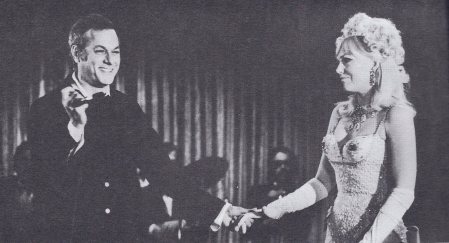




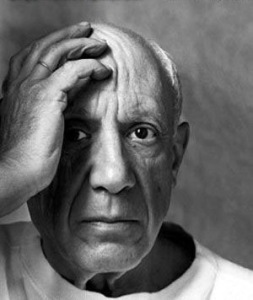
 The piece is done with crayon on paper, and took several months to complete. A friend, Pierre Daix, tells of his memory of the piece on a visit to Picasso, “[Picasso] held the drawing beside his face to show that the expression of fear was a contrivance.” Then on another visit 3 months later, Pierre recalled that the harsh colored lines were even deeper, and Pierre writes, “He did not blink. I had the sudden impression that he was staring his own death in the face, like a good Spaniard”
The piece is done with crayon on paper, and took several months to complete. A friend, Pierre Daix, tells of his memory of the piece on a visit to Picasso, “[Picasso] held the drawing beside his face to show that the expression of fear was a contrivance.” Then on another visit 3 months later, Pierre recalled that the harsh colored lines were even deeper, and Pierre writes, “He did not blink. I had the sudden impression that he was staring his own death in the face, like a good Spaniard”
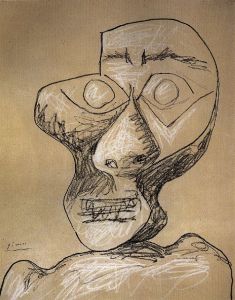






,_gouache_and_pencil_on_board,_68.5_x_96_cm,_private_collection.jpg)


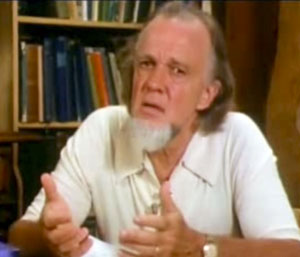






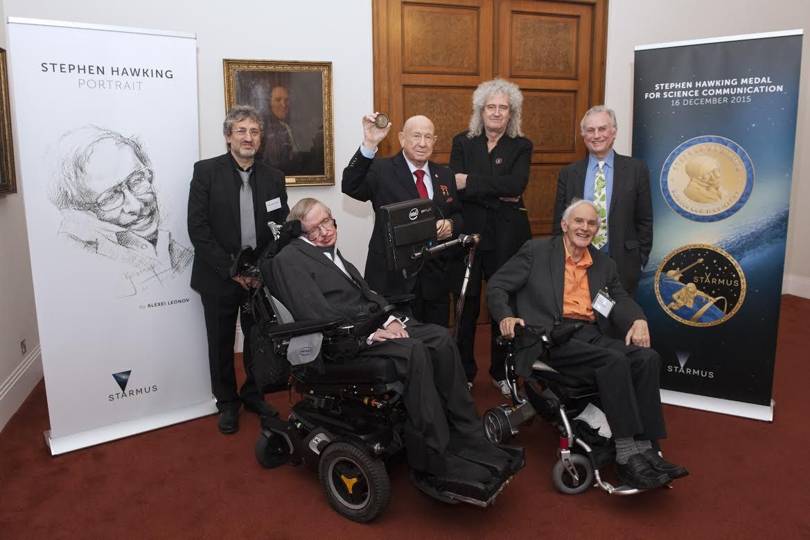

 Melvin Pickens,
Melvin Pickens,



















 ” width=”515″ > Fig 15. Logos for: i) The Vega Science Trust, ii) Alliance Française de Tallahassee, iii) Kroto Research Institute, Sheffield, iv) Internet Buckyball workshop to 2000 schoolchildren across Australia, v) GEOSET logo
” width=”515″ > Fig 15. Logos for: i) The Vega Science Trust, ii) Alliance Française de Tallahassee, iii) Kroto Research Institute, Sheffield, iv) Internet Buckyball workshop to 2000 schoolchildren across Australia, v) GEOSET logo









